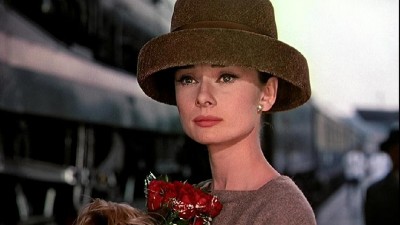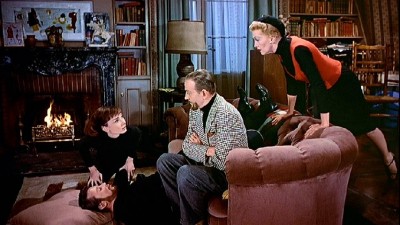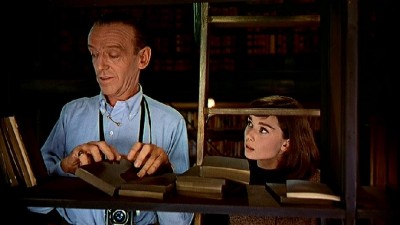
Stanley Donen’s Funny Face (1957) marked the director’s first film away from MGM, and it shows — in only positive ways. Donen may have brought a lot of MGM personnel from Metro, but the film looks and feels like a Paramount picture. It’s freer and fresher. It’s at once more naturalistic and more stylized, which is to say it doesn’t feel like it’s taking place on a soundstage, but is otherwise wholly fantasticated — with Donen pushing Technicolor to the very limits of color saturation. (This may be the most gorgeous color film of the 1950s.) As musical comedies of the era go, they don’t get much better than this—and very few are this good. (Rouben Mamoulian’s Silk Stockings, which came right afterwards, is in the same league.)

Though supposedly based on the Gershwins’ 1927 stage play (which also starred Astaire), the film is actually based on screenwriter Leonard Gershe’s play, Wedding Bells. The Gershwin connection is strictly in the songs (including, of course, “Funny Face”). The story is all about photographer Richard Avery (Astaire in a role based on real photographer Richard Avedon, who worked on the film) turning bookish Greenwich Village intellectual Jo Stockton (Hepburn) into a fashion model — much to the dismay of publisher Maggie Prescott (Kay Thompson as a thinly-disguised Diana Vreeland). At bottom, it’s a culture clash romantic comedy — you might say Jo is cultured, while Avery and the magazine people are not. (The film is on the magazine folks’ side. Intellectuals then, as now, are often a little suspect.) Jo only takes the job because it means a trip to Paris where she can hopefully meet her hero, Professor Emile Flostre (Michel Auclair). That does not mean she won’t fall in love with Avery along the way — that’s a given. It’s all in good fun, and in that regard, it rings the gong.

In addition to being an incredible musical comedy (Astaire’s next-to-last starring musical), the film is also notable as the only significant film appearance of Kay Thompson, who is perhaps best known as the creator of the Eloise children’s books. She’d also been a songwriter and was head of MGM’s vocal department — as a song arranger and vocal coach — since 1943. Judging by her work here, it looks like the lack of a screen career for Thompson (reportedly, she didn’t like the slowness of film production) was our loss. At least, she gets a spectacular moment in the sun here. Also, of note is the presence of frequent Richard Avedon model Dovima as the air-headed model, Marion. Whether by accident or design, the comic book-reading model is a highlight of the film.
The Asheville Film Society will screen Funny Face Tuesday, Feb. 18, at 8 p.m. in Theater Six at The Carolina Asheville and will be hosted by Xpress movie critics Ken Hanke and Justin Souther.




See also Hepburn and Grant in Charade. While the age disparity with leading men and women is a Hollywood staple, Katherine Hepburn seems to have specialized in playing against the old guard.
Except you mean Audrey, not Katharine.